My 22nd fairy crown is a celebration of the ornamental grasses I grow at the cottage on Lake Muskoka. The little seeds are from switch grass (Panicum virgatum); my “bangs” are big bluestem (Andropogon gerardii); and there’s also some pollen-laden Indian grass (Sorghastrum nutans) there as well. The pale lavender flowers are a little aster that grows wild on our property, sky-blue aster (Symphyotrichum oolentangiense). The pink flowers are the New England aster ‘Harrington’s Pink’ (Symphyotrichum novae-angliae).
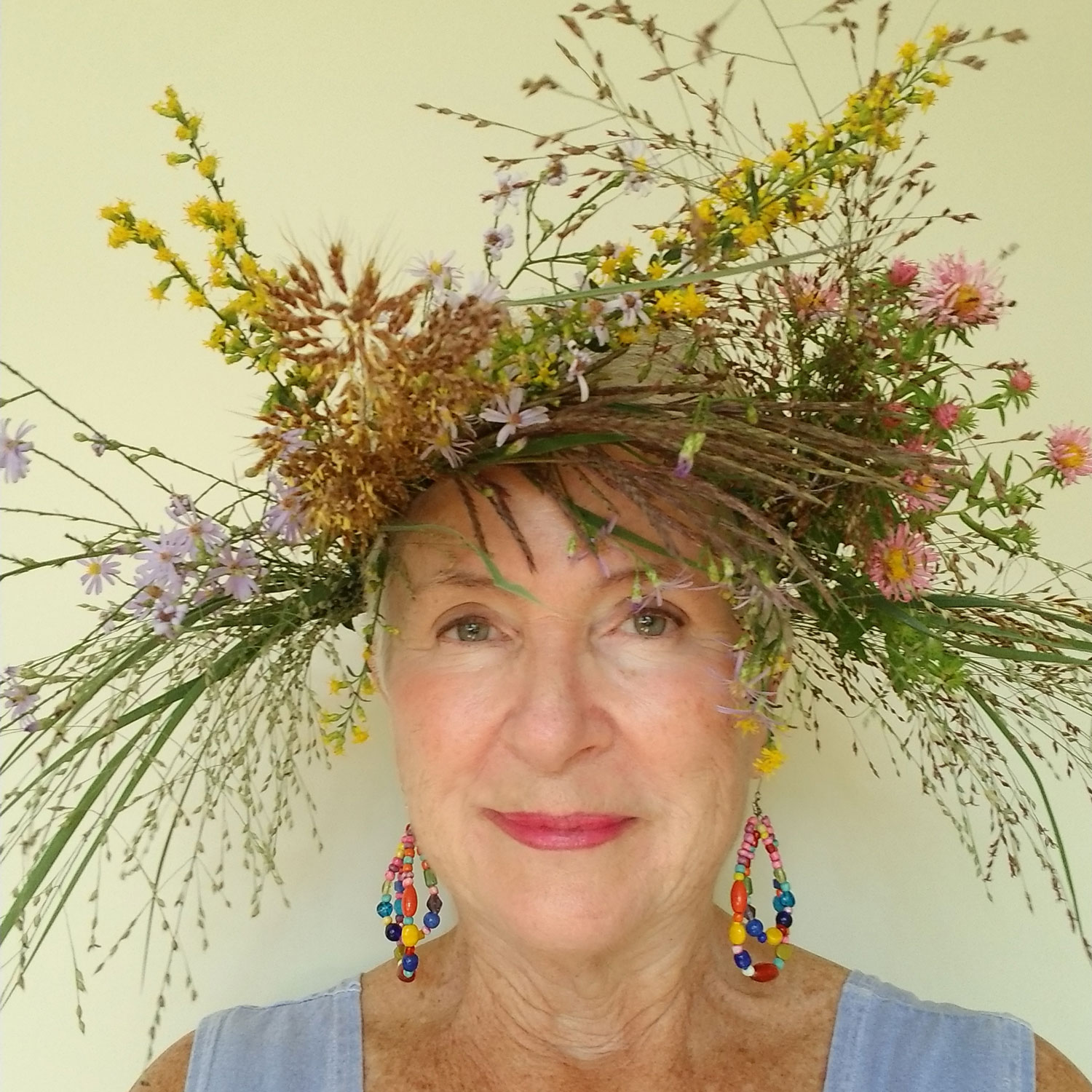
In fact, #22 was the most unruly of all my crowns to make, given that the grasses had long flowering spikes that were difficult to attach to the wire frame. Here’s a little inside look at the nuts-and-bolts of fairy crown creation.
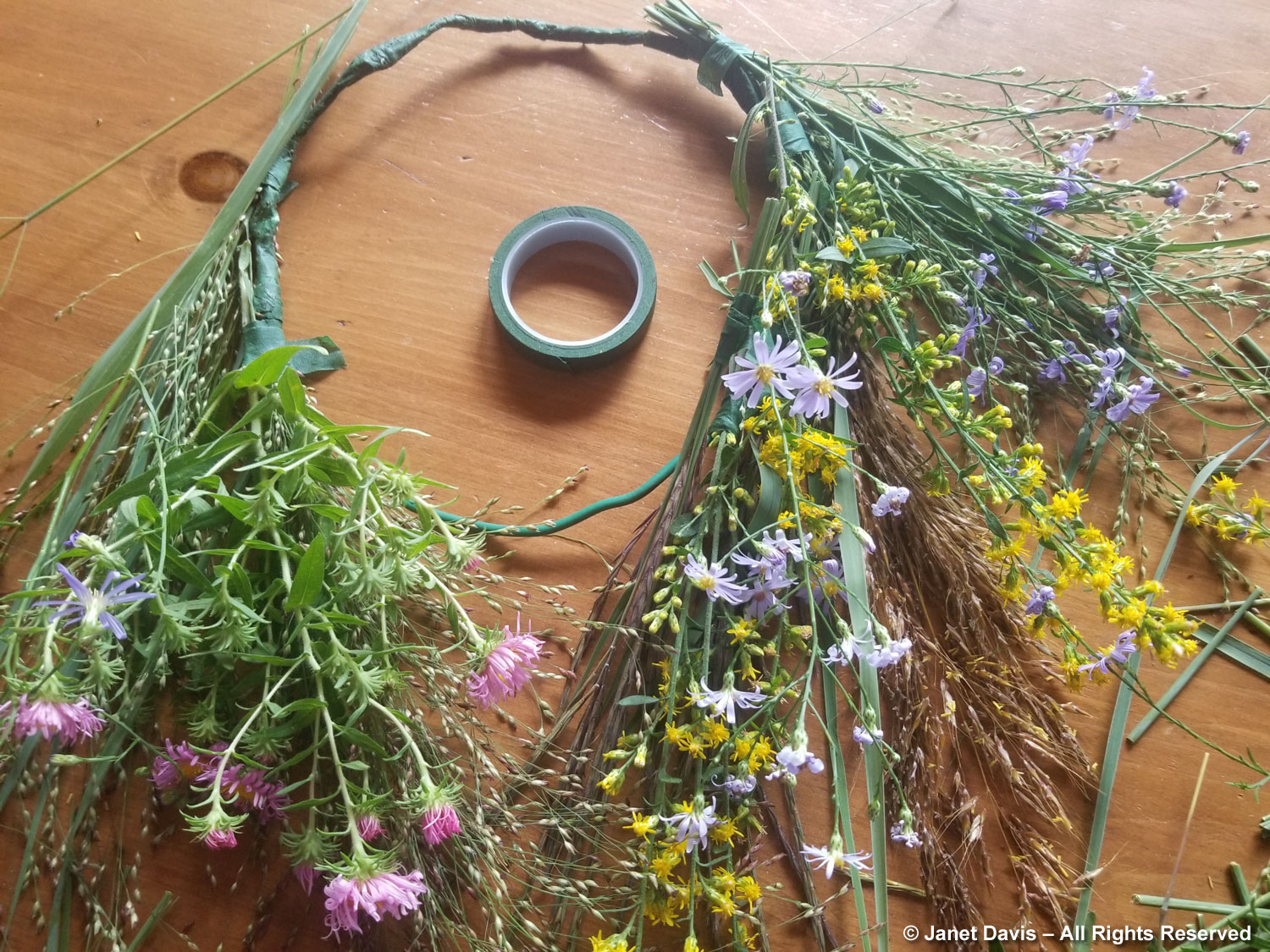
Many of my prairie grasses grow in the west meadow. In the photo below, you can see big bluestem (Andropogon gerardii) mixed with heliopsis, lanceleaf aster and various goldenrods.
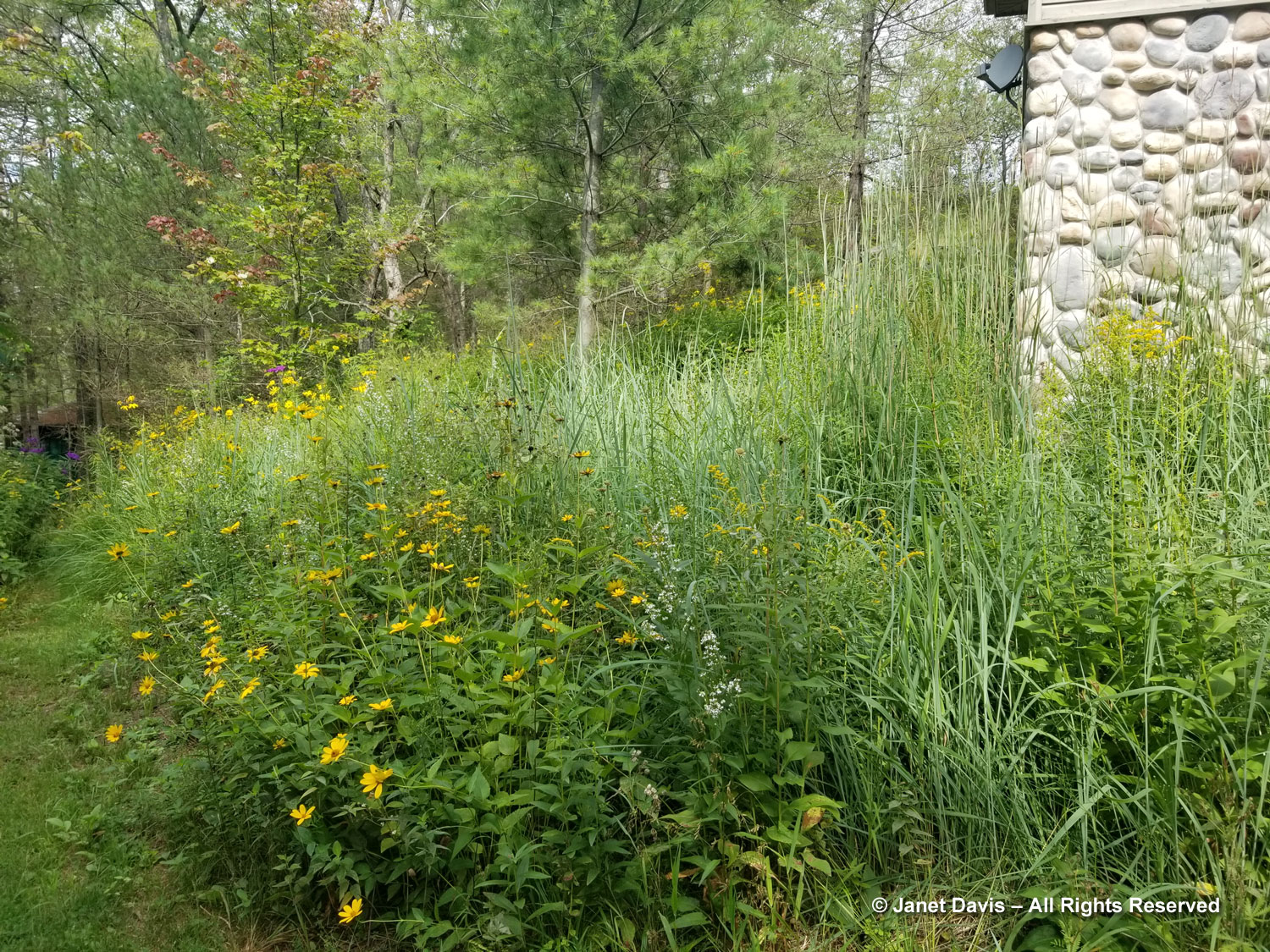
When native switch grass (Panicum virgatum) is in flower and the sun shines behind it, it adds a beautiful sense of lightness to the meadow. I planted a few nursery pots of various cultivars of switch grass in the naturalistic garden beds on the property, but I also sowed seed of the species throughout the meadows and it is gradually filling in in many places….
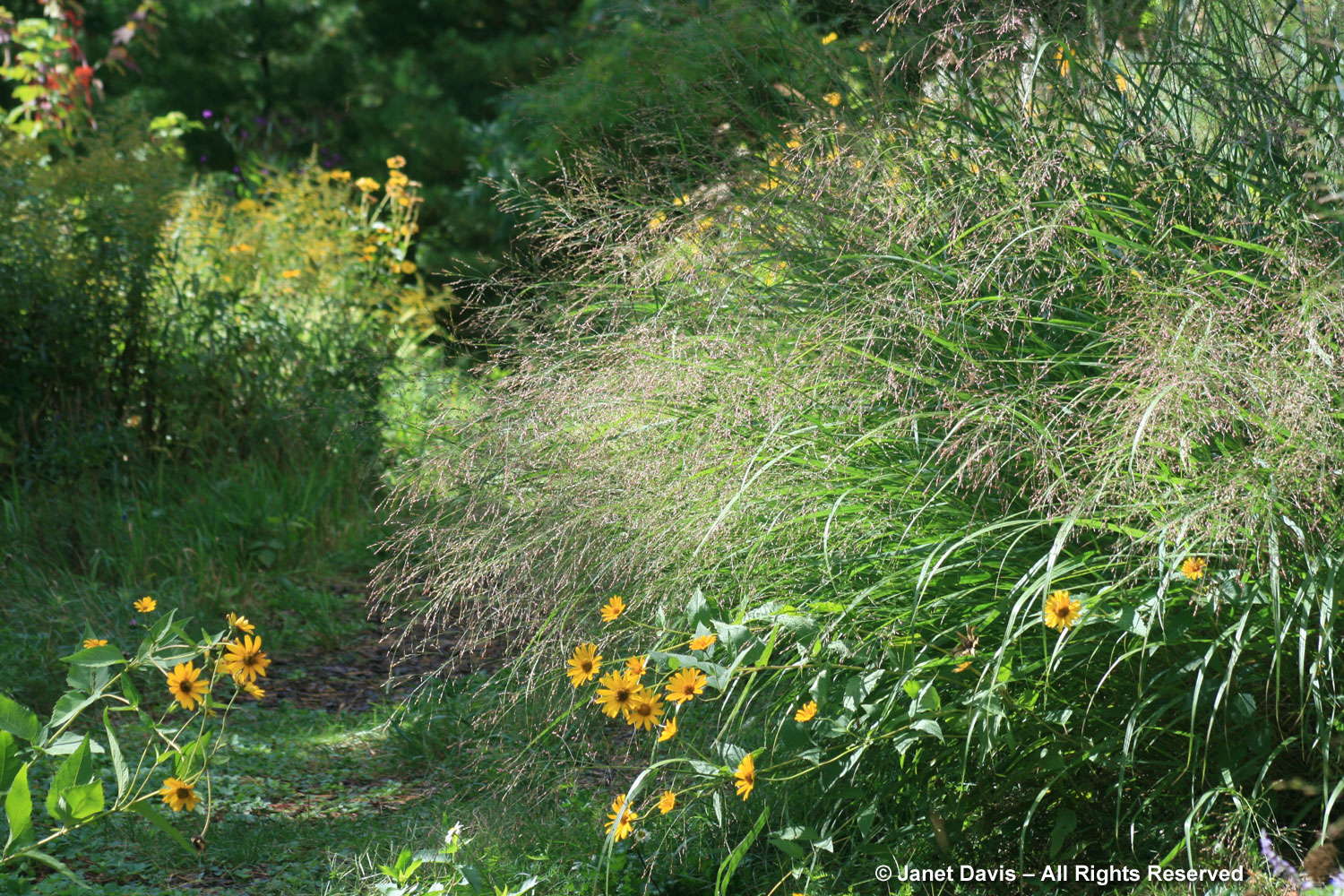
….. including the lake shore.
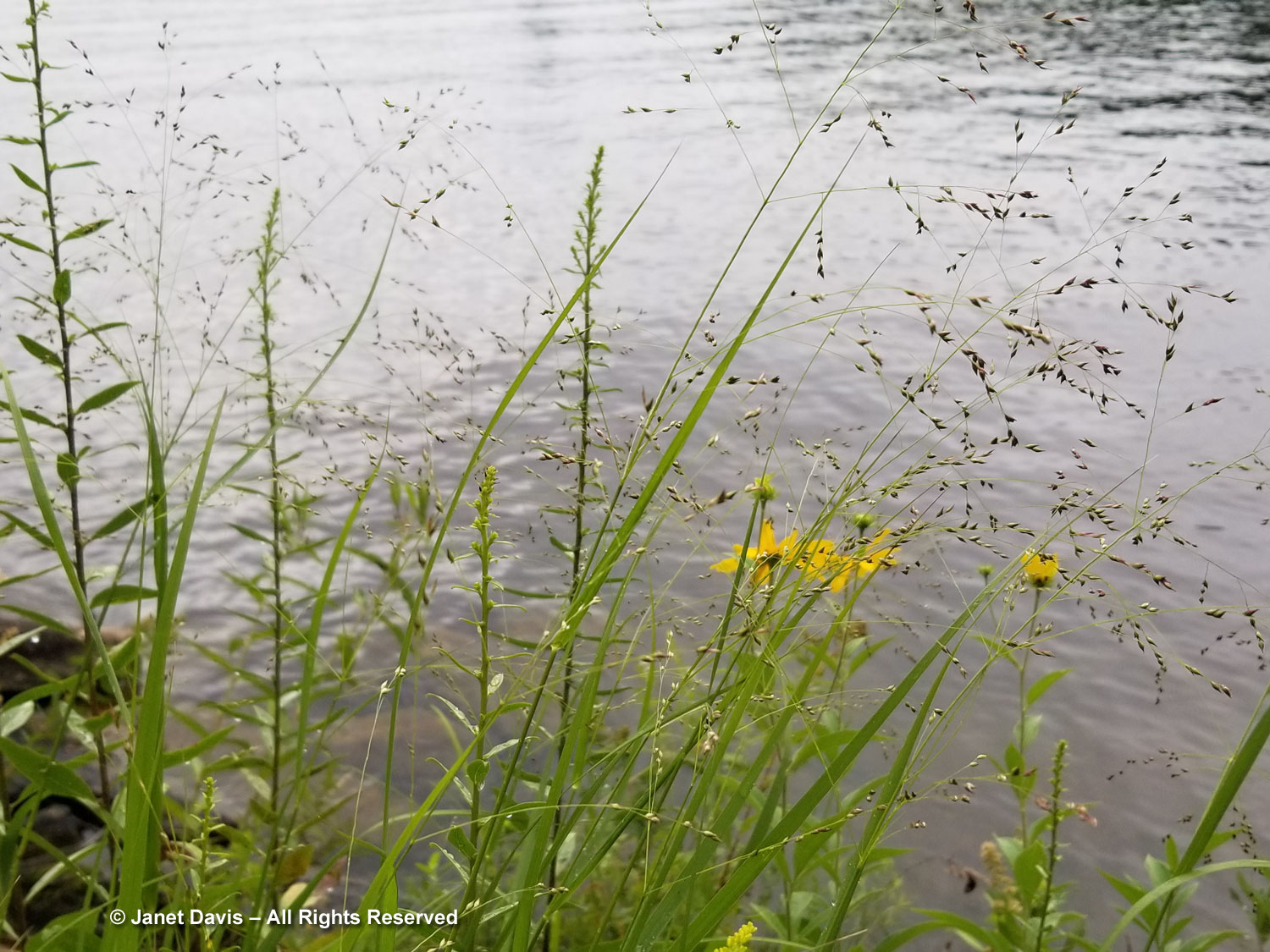
It has a swishing, kinetic quality that makes sitting beside it in late summer a sensory experience.
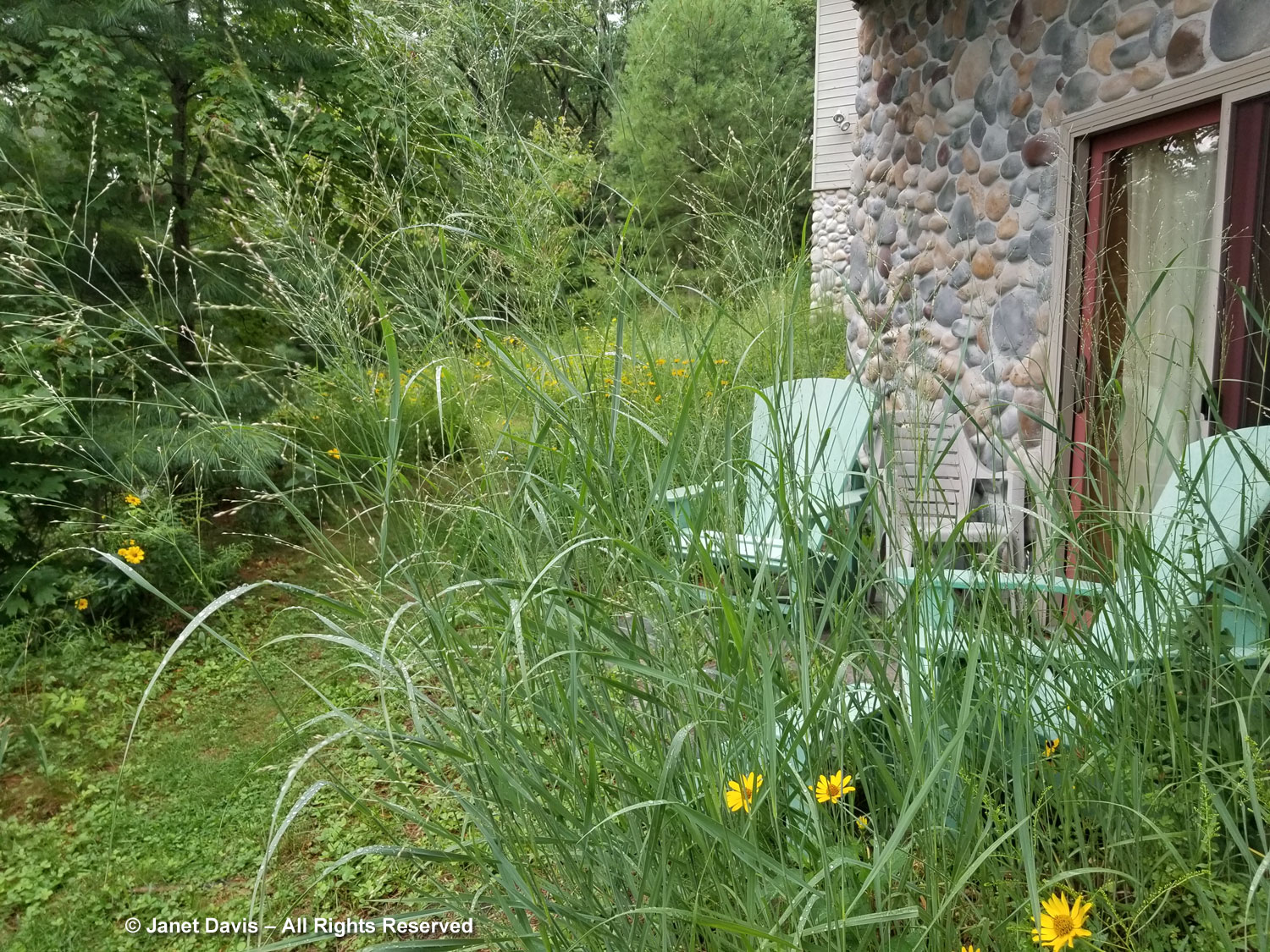
And in autumn, switch grass turns colour, with some taking on red hues and others golden-yellow.
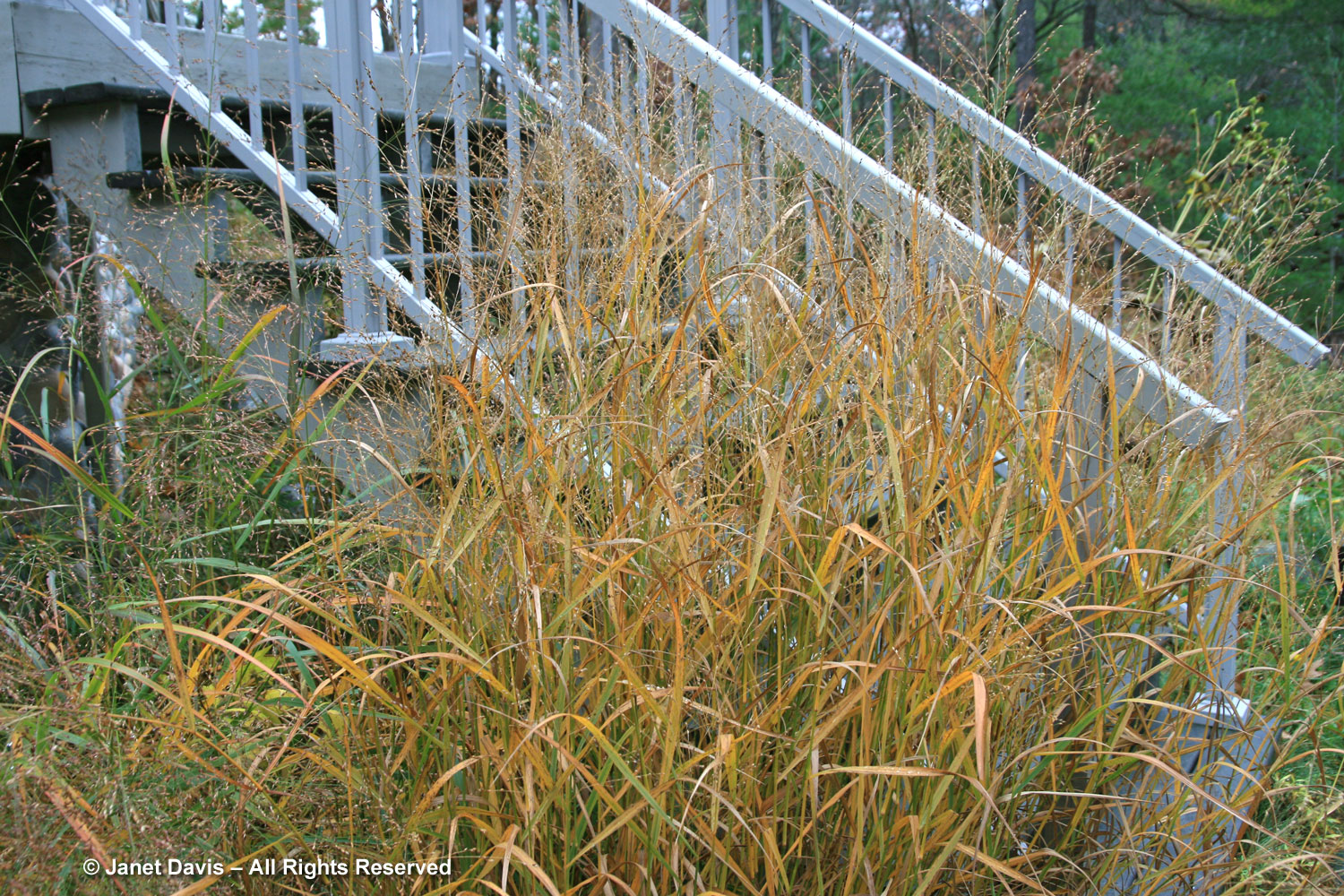
Big bluestem (Andropogon gerardii) is sometimes called turkeyfoot grass because the flower spikes branch into three segments that resemble a turkey’s foot. It is native to southern Ontario.
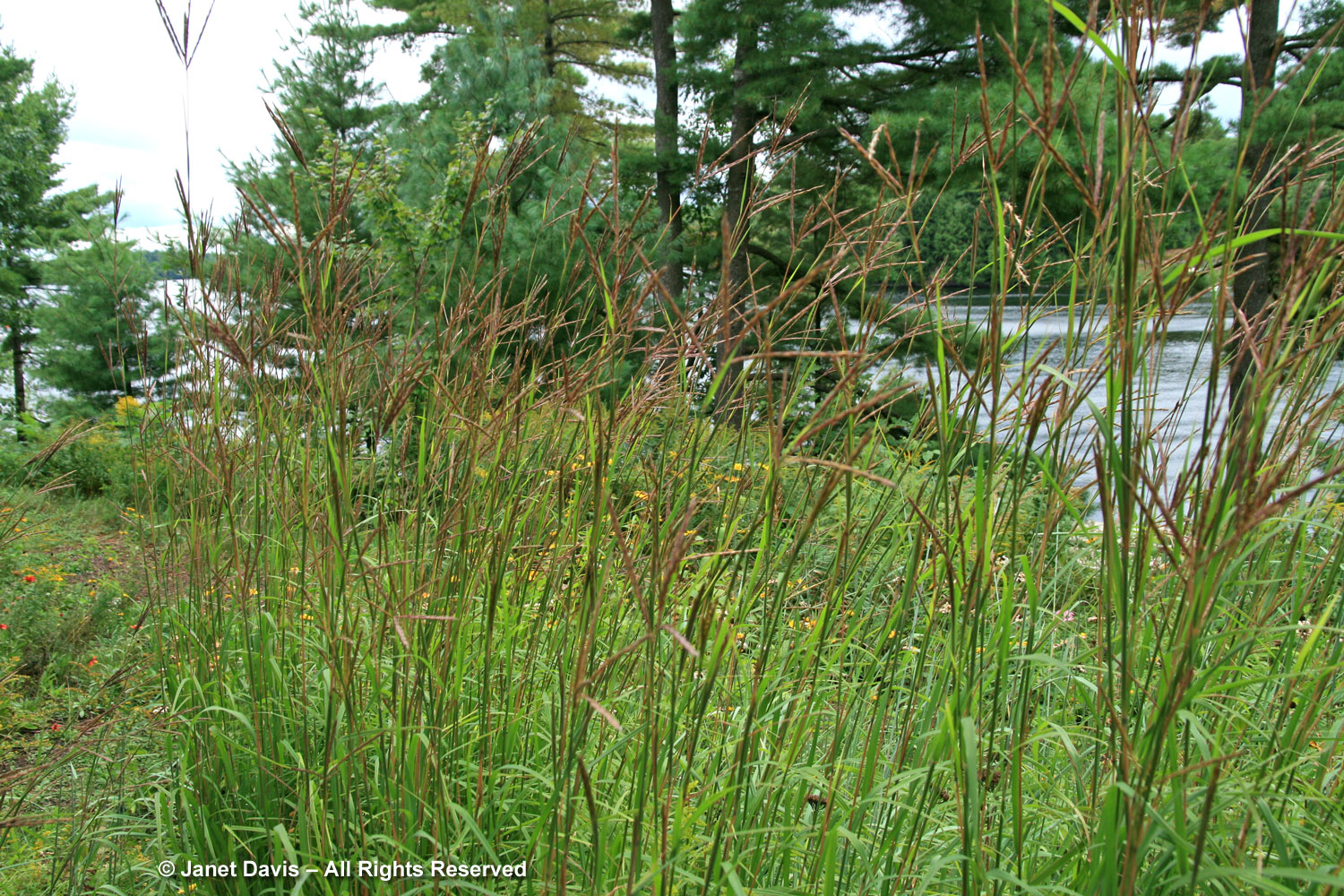
By the time it blooms in early September alongside big bluestem, grey-headed coneflower (Ratibida pinnata) is usually showing off its oblong black seedheads.
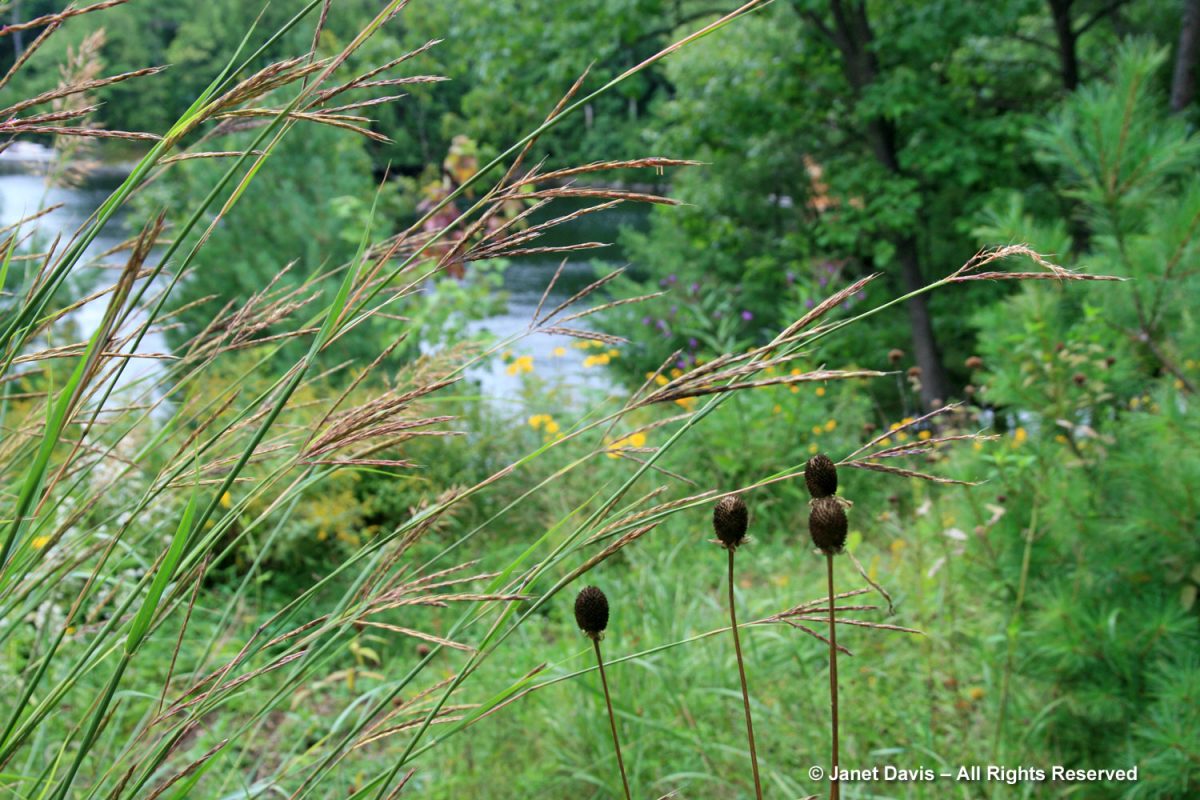
Indian grass (Sorghastrum nutans) is a stealth grass; one minute it’s in a tidy clump in a garden bed, the next minute it’s popping up in cracks between flagstones. But it’s one of the native grasses I’ve encouraged to grow in the shallow, sandy soil of the west meadow. I assume its deep, searching roots find cracks in the Precambrian bedrock that somehow approximate the deep soil of the tallgrass prairie that once covered millions and millions of acres of North America. That little aster peeking out from the Indian grass is sky-blue aster (Symphyotrichum oolentangiense).
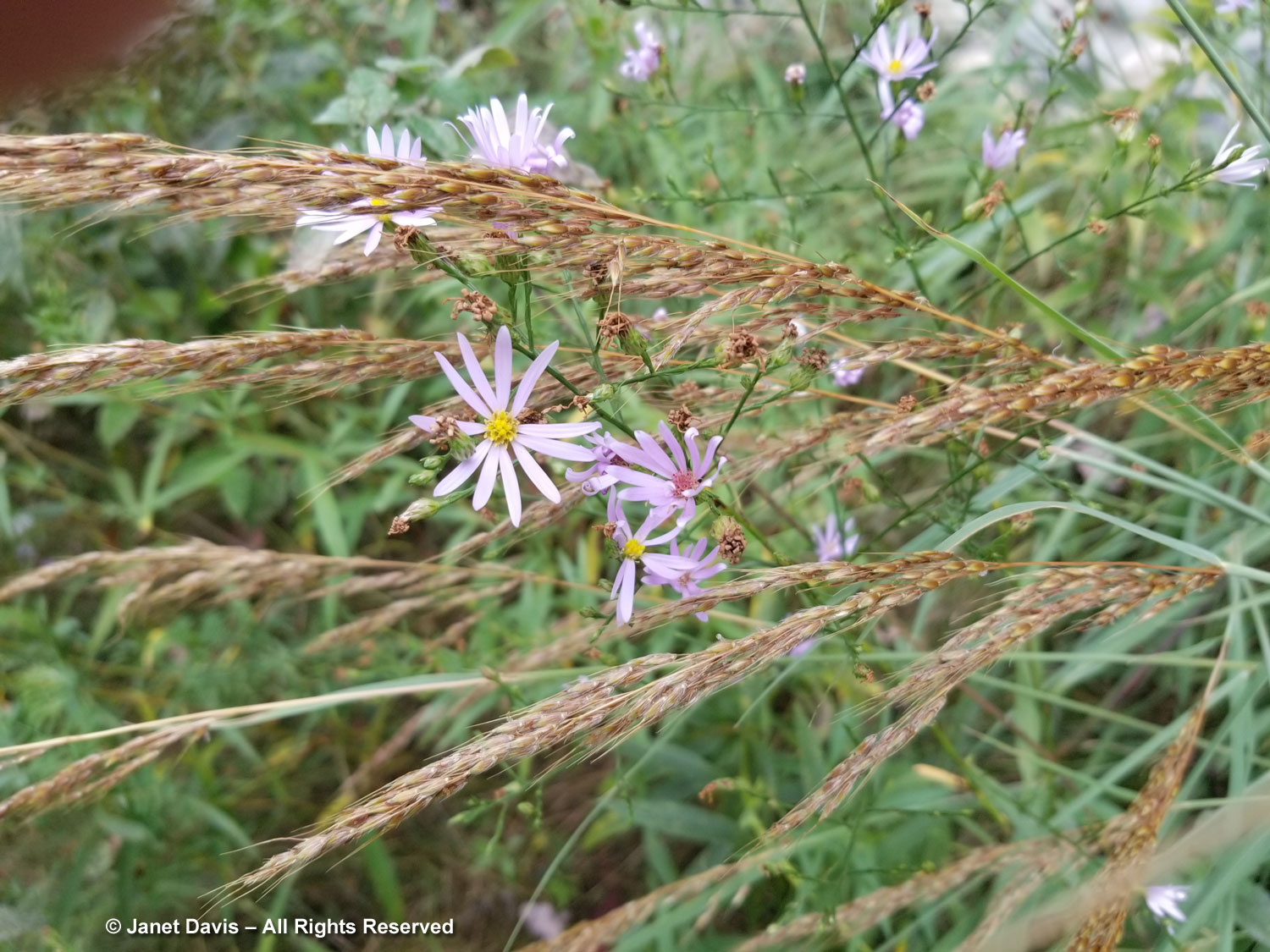
I see it all over the countryside in Muskoka, but I adore the way it pops up amidst native species that I sowed in the meadows here, like wild beebalm (Monarda fistulosa), below, showing its late summer seedheads.
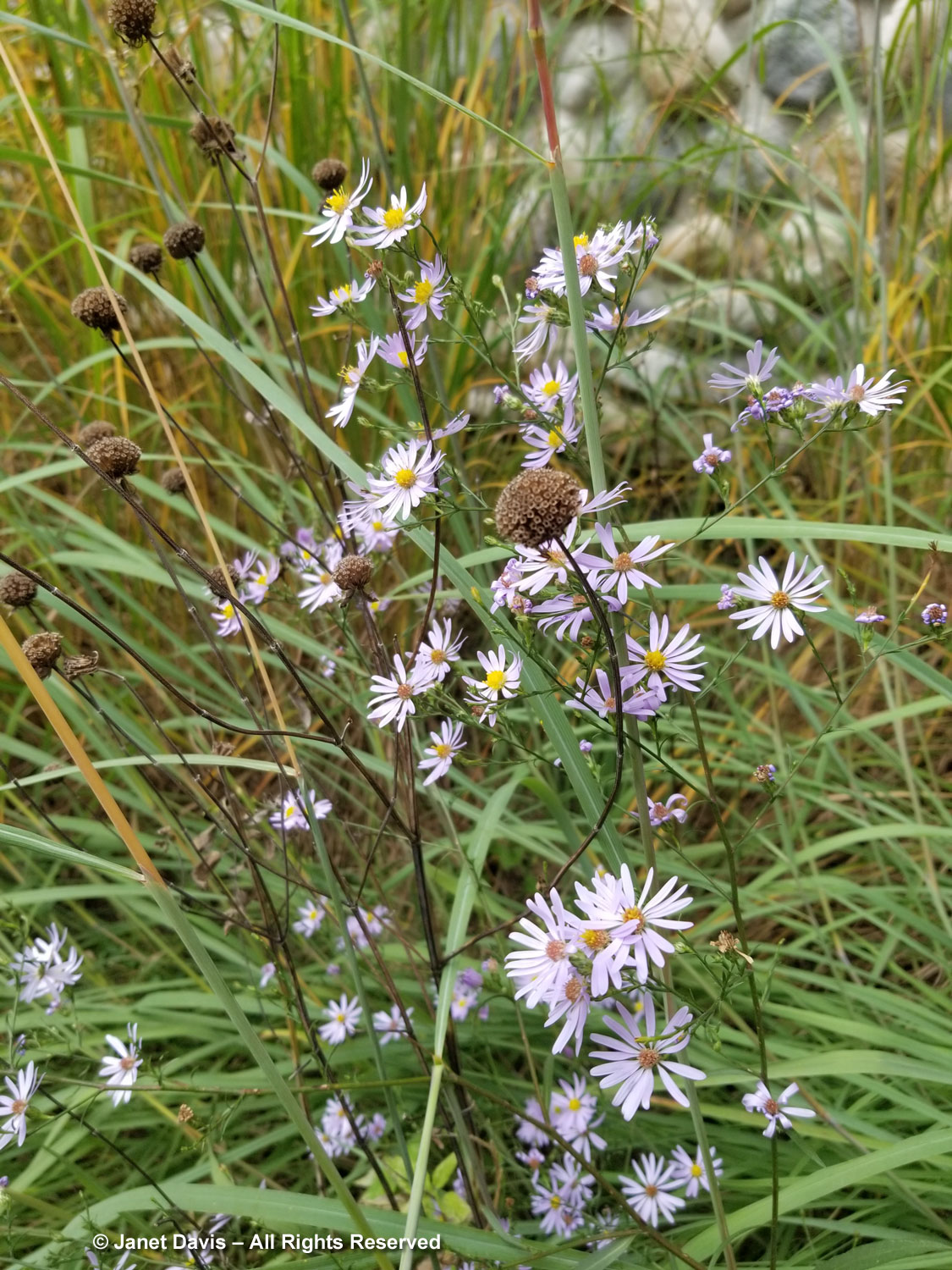
It’s one of those plants that is unassumingly charming – and new plants emerge in different spots each September.
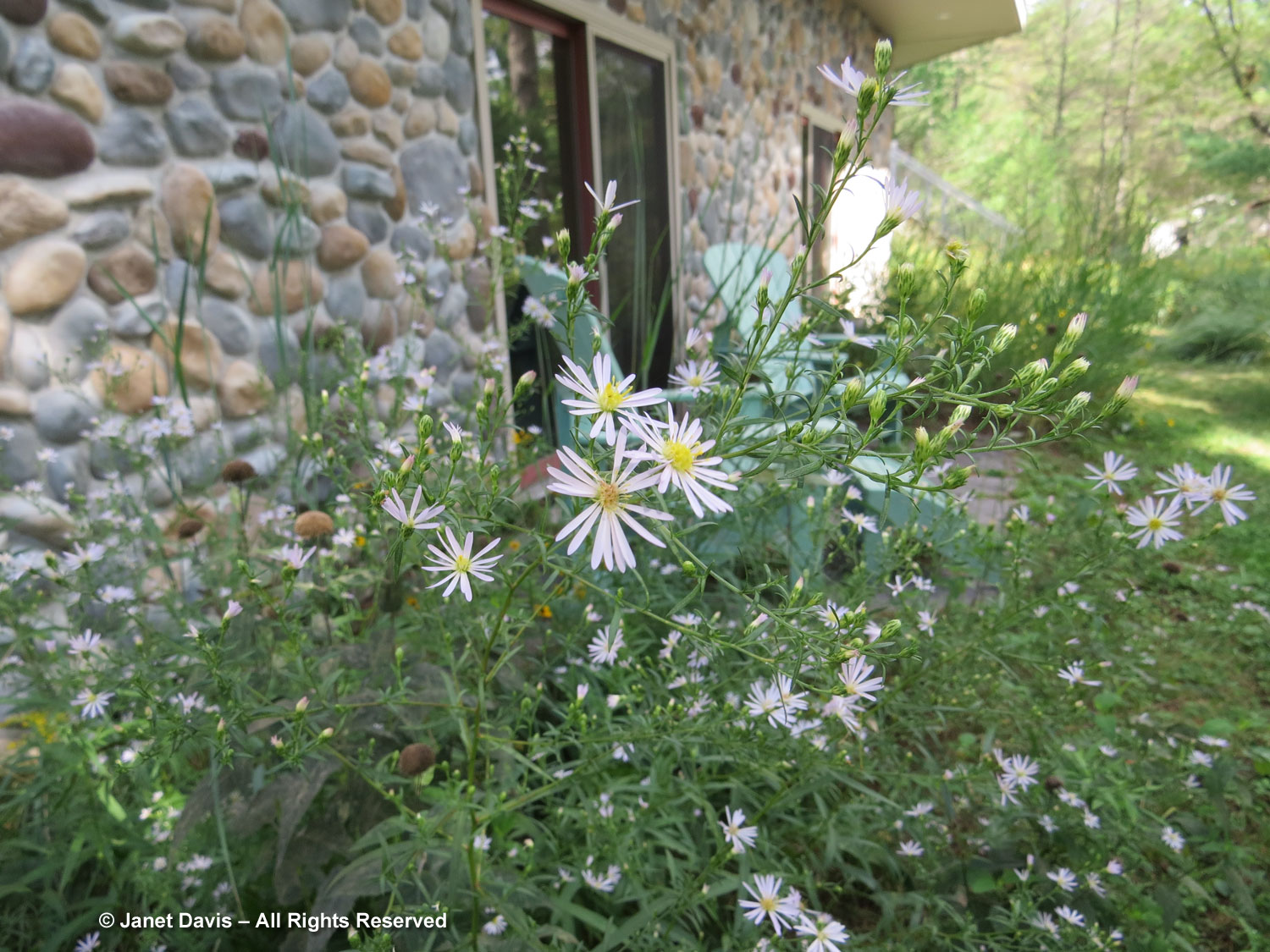
But bees are sure to find it, including the orange-belted bumble bee (Bombus ternarius), below.
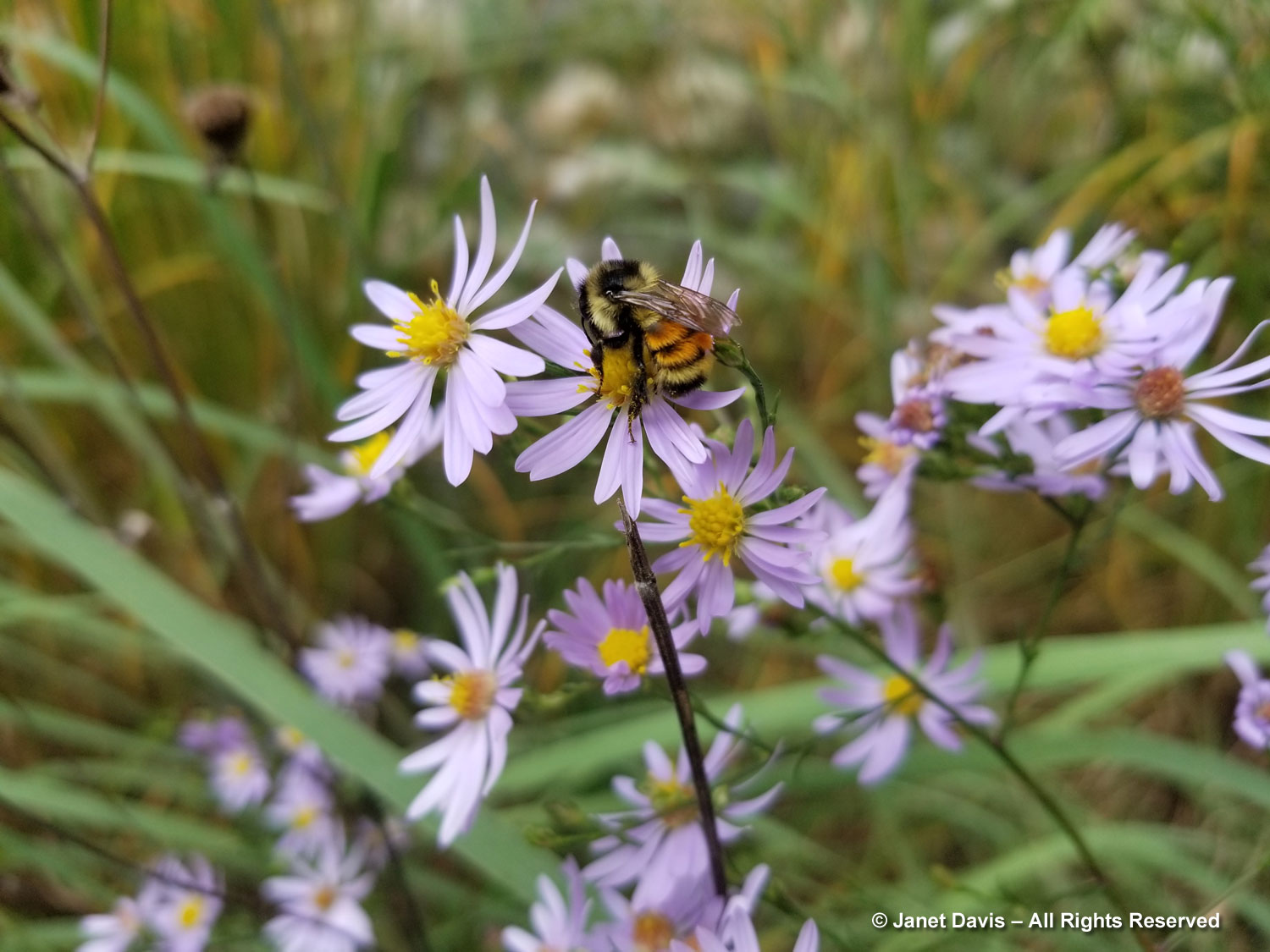
In my east meadow, September features another plant I received from the gardeners at Toronto’s Spadina House Museum – only this time, I purchased at their plant sale (unlike my cup plants, which were gifted to me by Spadina’s gardeners with a warning about their rambling ways.) Meet Symphyotrichum novae-angliae ‘Harrington’s Pink’, below, partnering with sweet blackeyed susan (Rudbeckia subtomentosa).
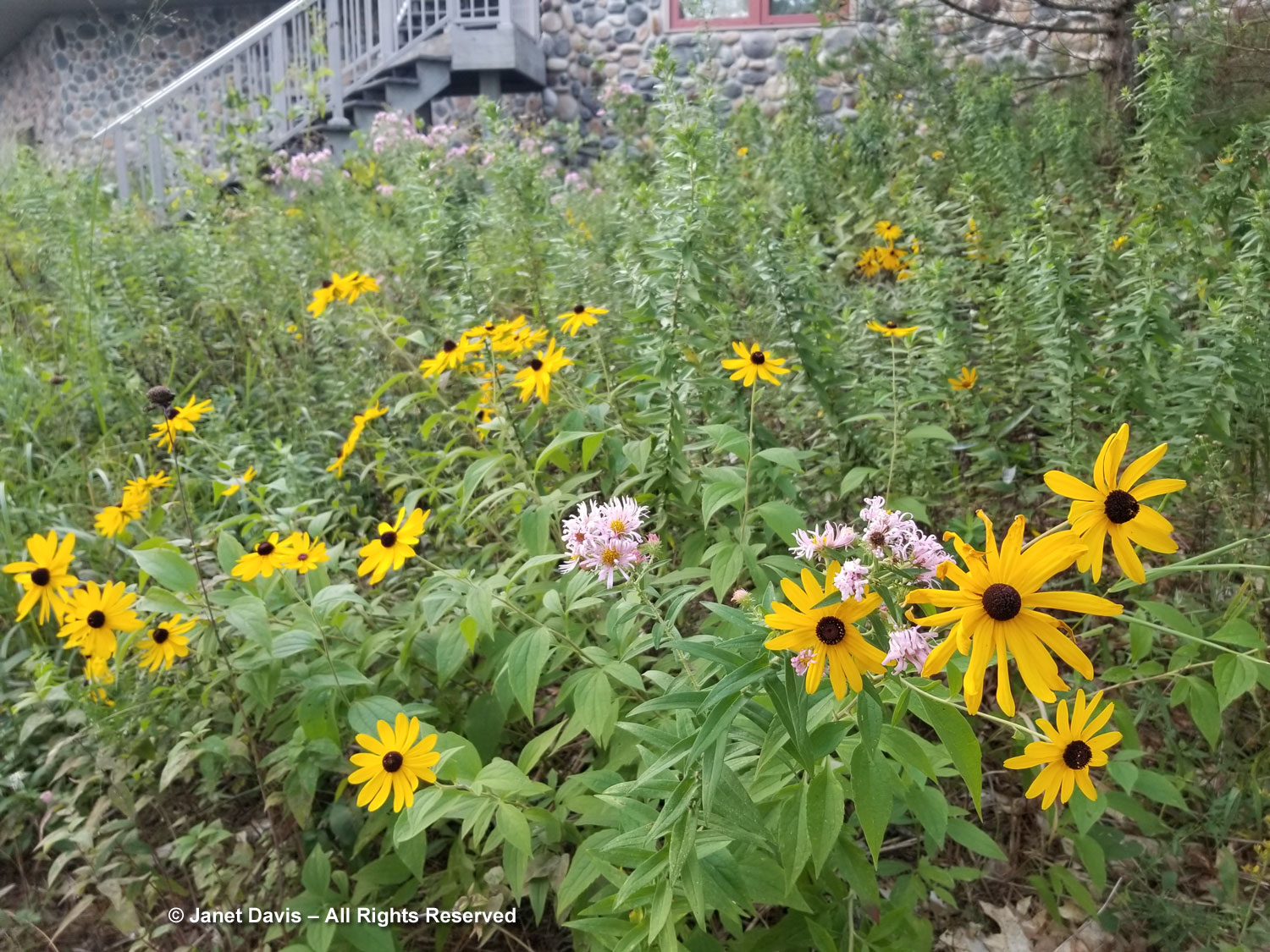
Bumble bees are fond of ‘Harrington’s Pink’…. even if the flowers sometimes don’t fully open in my dry meadows and tend to look a little wonky…..
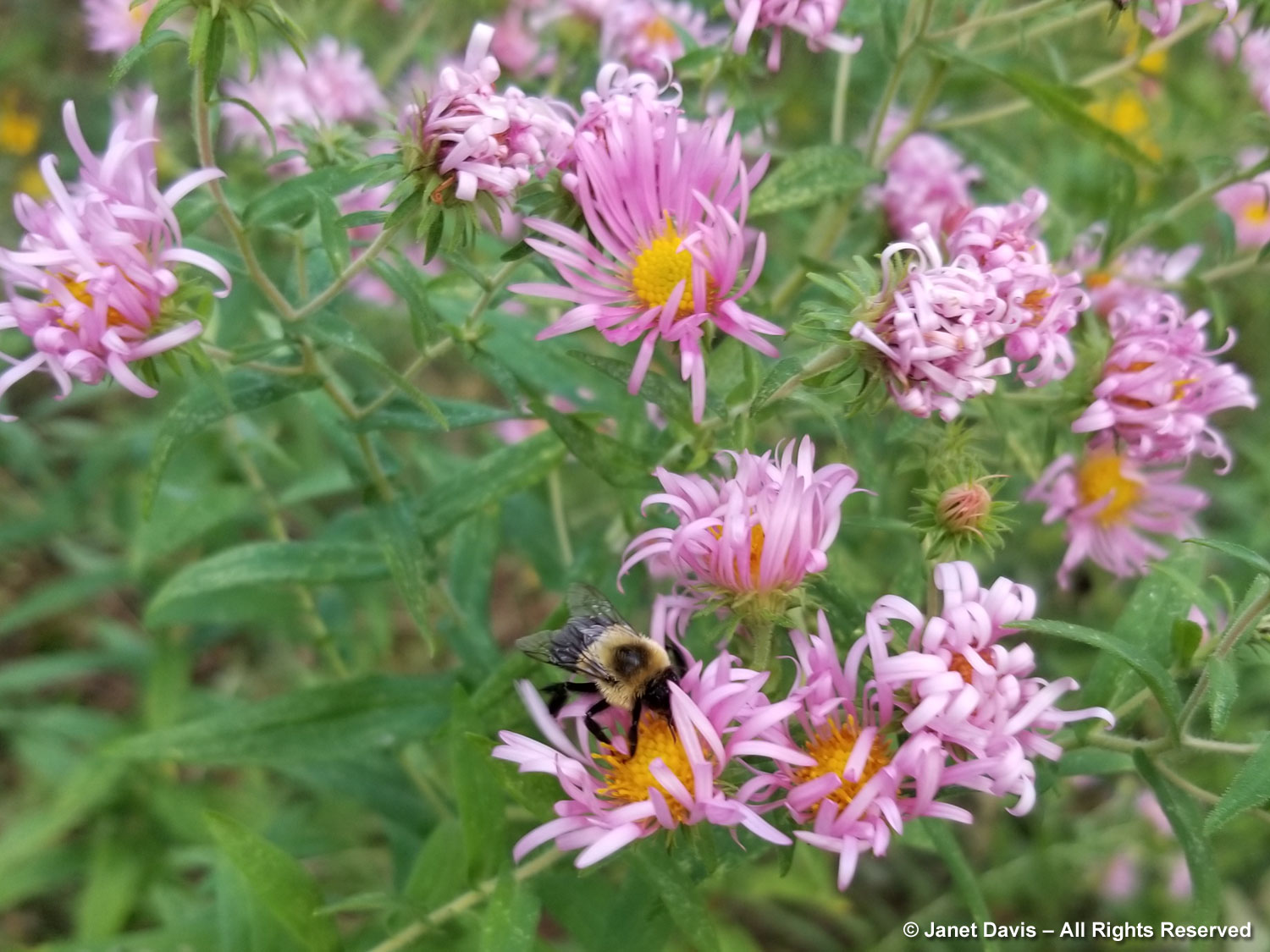
….. unlike the spectacular display this plant makes at Spadina House in early autumn, along with other cultivars of New England aster.
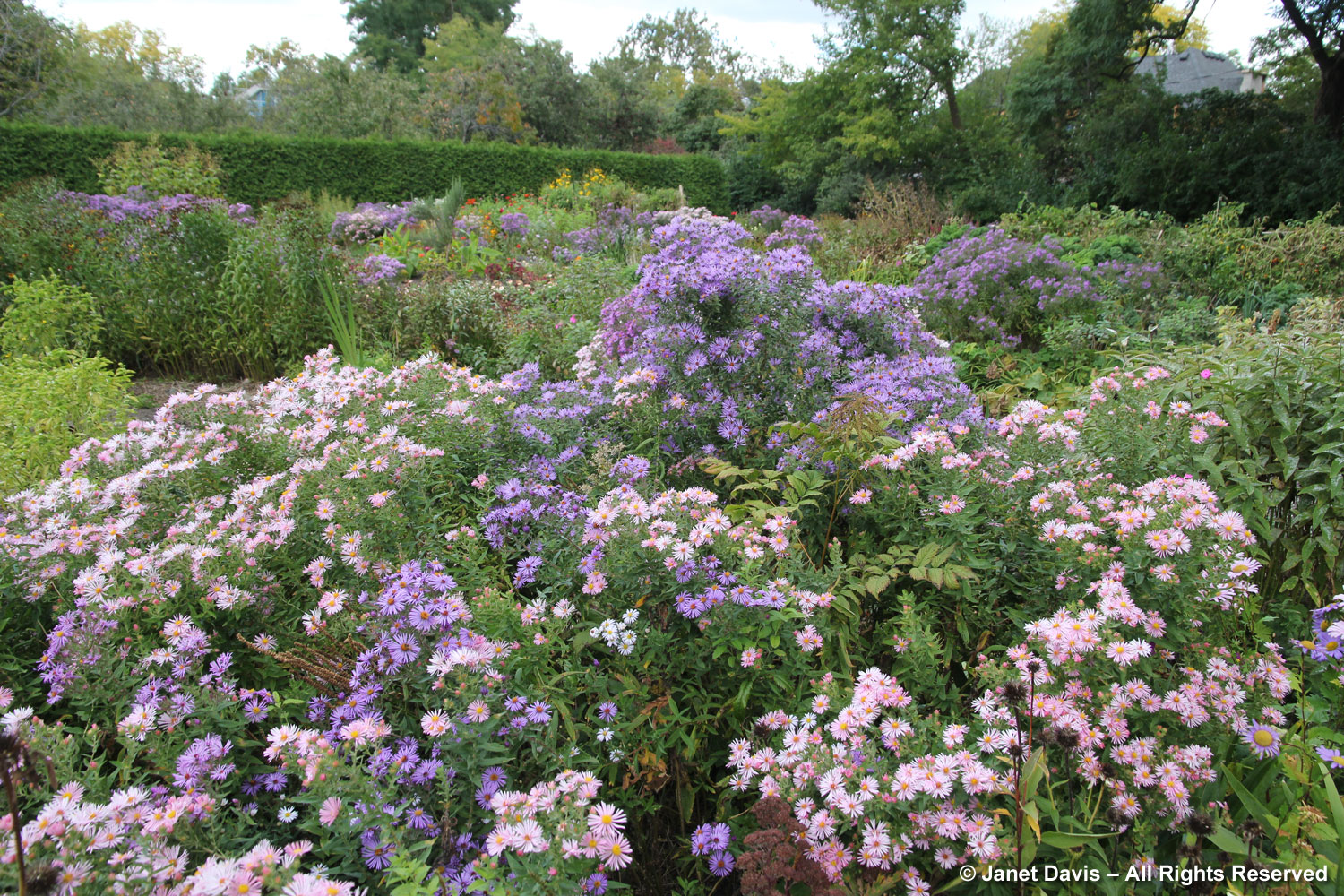
The goldenrod in my crown is not one you see in nurseries; in fact, it took me a while to identify it, but I think I have. It is hairy goldenrod (Solidago hispida), native to dry, rocky places in a large swath of the northeast.
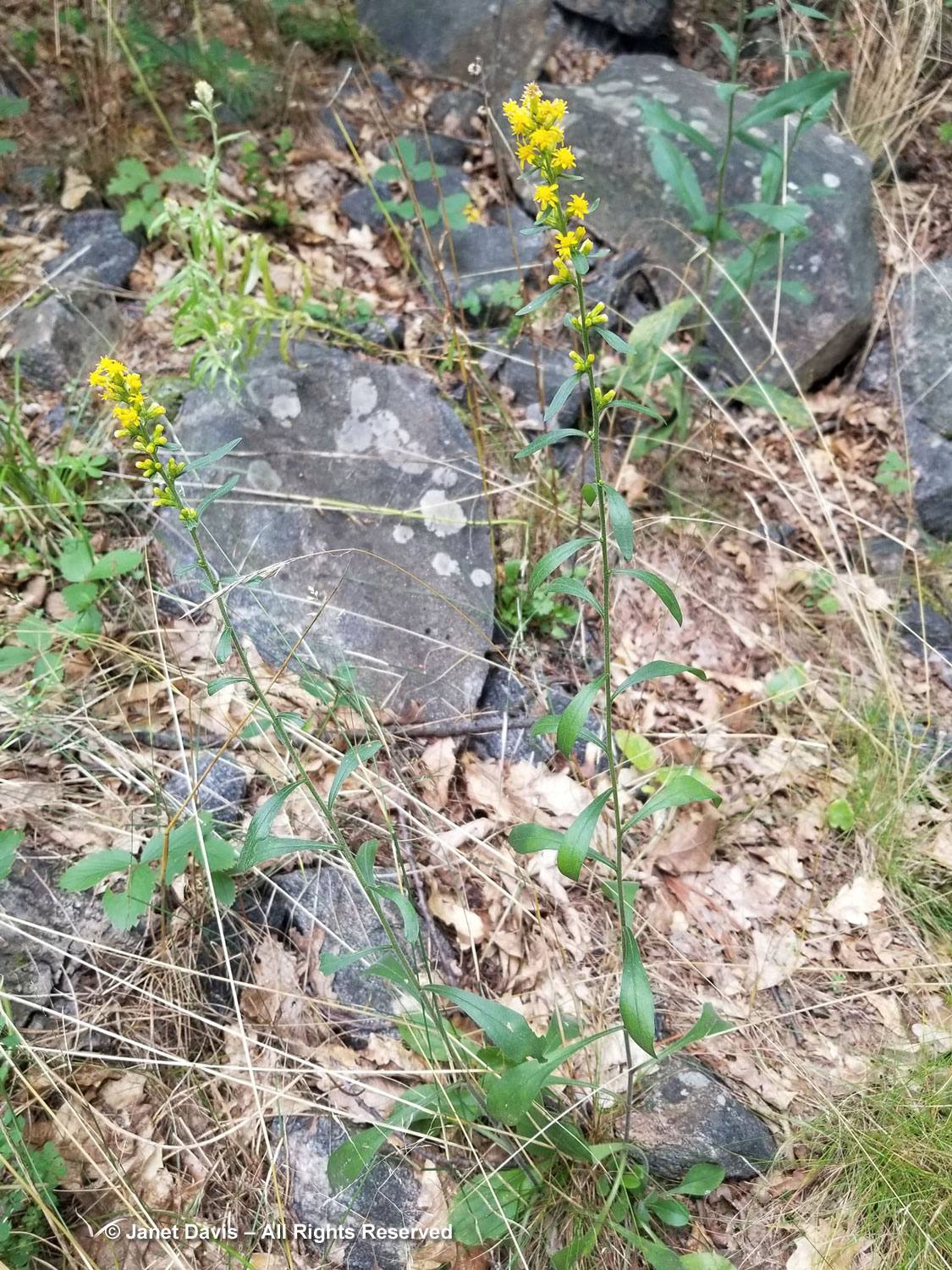
I’ll leave you with a bouquet I made many years ago that celebrates the big grasses, asters, seedheads and goldenrods that shine in my meadows at this time of year. The cowboy boot? Well, it just seemed fitting for this celebration of the prairie on Lake Muskoka!
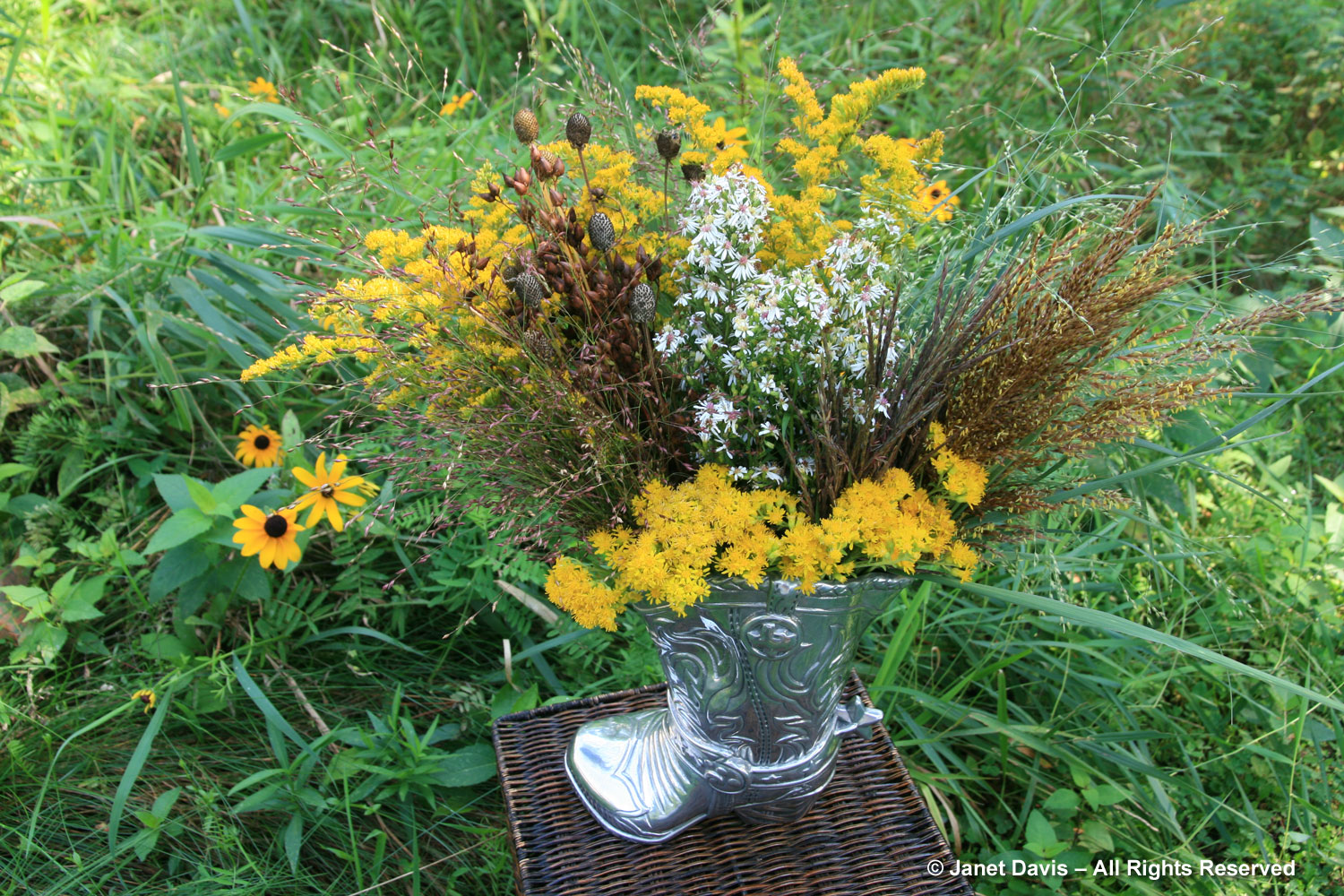
*********
Here are the blogs on my previous 21 fairy crowns!
#1 – Spring Awakening
#2 – Little Blossoms for Easter
#3 – The Perfume of Hyacinths
#4 – Spring Bulb Extravaganza
#5 – A Crabapple Requiem
#6 – Shady Lady
#7 – Columbines & Wild Strawberries on Lake Muskoka
#8 – Lilac, Dogwood & Alliums
#9 – Borrowed Scenery & an Azalea for Mom
#10 – June Blues on Lake Muskoka
#11 – Sage & Catmint for the Bees
#12 – Penstemons & Coreopsis in Muskoka
#13 – Ditch Lilies & Serviceberries
#14 – Golden Yarrow & Orange Milkweed
#15 – Echinacea & Clematis
#16 – A Czech-German-All American Blackeyed Susan
#17- Beebalm & Yellow Daisies at the Lake
#18- Russian Sage & Blazing Stars
#19-My Fruitful Life
#20-Cup Plant, Joe Pye & Ironweed
